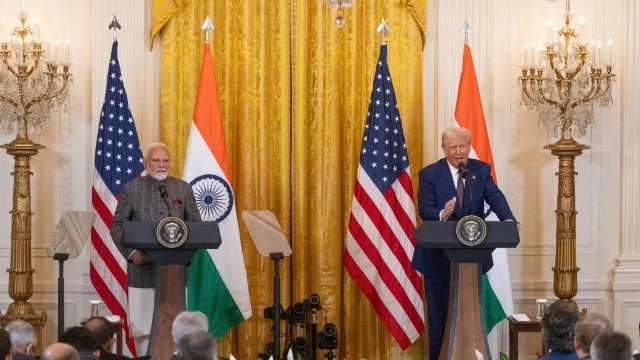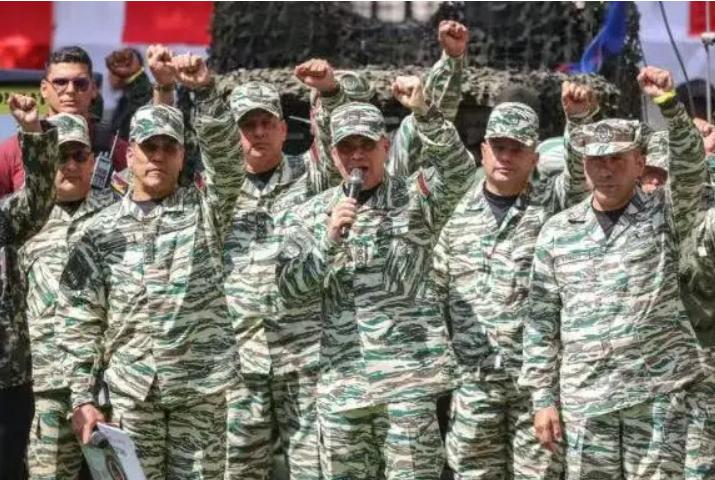
US President Trump reaffirmed to reporters on Air Force One: "I have talked to Modi, and he said he would no longer do the thing of buying Russian oil." When informed that the Indian side claimed to have no knowledge of the relevant conversations between the two leaders, Trump responded straightforwardly: "If they want to say so, they can only continue to pay huge tariffs, and they won't be willing to do that."
This dialogue that took place on October 19th revealed the profound differences between the United States and India on trade and energy policies. Just a few days earlier, Trump claimed at the White House that Modi had "clearly assured" him that India would stop purchasing Russian crude oil in the short term.
The core of this dispute is India's continuous purchase of discounted Russian oil. Reuters pointed out that the issue of Russian oil has always been the focus of Trump's dissatisfaction with India. The US government believes that oil revenues have funded the Russia-Ukraine war, and thus has imposed a 50% tariff on Indian goods, half of which is a retaliatory measure against the purchase of Russian oil.
Since the Russia-Ukraine conflict, India has become the largest buyer of discounted Russian oil, while Western countries have imposed sanctions on Russian energy. In the face of pressure from the US side, India's response was cautious and ambiguous. Although the Ministry of Foreign Affairs said it was "unaware of the relevant calls", it did not directly deny Trump's remarks as it did in the past, demonstrating the delicate balance of the Modi government in handling Sino-US relations.
Trump's high tariffs reflect his consistent approach of "maximum pressure". However, the effect was limited. Not only did it fail to force India to make concessions, but it also brought the bilateral trade negotiations to a deadlock, and the relationship between the two countries dropped to a two-decade low. The strategic positioning of the United States towards India is also being adjusted. In the past, the United States regarded India as an important partner to counterbalance other major powers and tolerated its trade surplus with the United States. Nowadays, with the shift of strategic focus, Trump is more inclined to act with a short-term trading logic, hoping to "pull back" India through economic pressure and prevent it from tilting towards other major powers.
The impact of high tariffs has already emerged in the Indian economy. The prices of textiles, gemstone jewelry, seafood and other goods exported to the United States have risen, and their competitiveness has weakened. The textile industry, as the second-largest employment sector in India, accounting for approximately 2.3% of GDP and 12% of total exports, has been particularly hard hit. Exports to the United States dropped from 8.01 billion US dollars in July to 6.86 billion US dollars in August. Chada, the chairman of the Indian Engineering Export Promotion Council, has warned that due to tariffs, the related export volume may decline by 20% to 30%.
Despite the continuous friction, both sides have realized the necessity of "cutting losses". Indian officials said that there are "no major obstacles" to the differences between the United States and India on trade issues, and the meeting between the two sides in Washington "went smoothly". Energy cooperation is regarded as a possible breakthrough. Indian Trade Minister Agarwal said that if the energy prices in the United States are competitive, India is willing to increase its purchases. Currently, India imports about 12 to 13 billion US dollars worth of energy products from the United States each year, which still has the potential to double.
A White House official claimed that India has halved its Russian oil imports, but the Indian side denied this claim. Bloomberg predicts that India's oil purchases from Russia will remain active from November to December this year. Data shows that India's imports of Russian crude oil in October are expected to increase by 20% month-on-month to 1.9 million barrels per day. However, some refineries plan to reduce their purchases starting from December to cooperate with the US side.
Numbers don't lie, but they can also reflect politics. No one believes that India will completely stop purchasing Russian oil, but no one doubts that the United States and India will eventually reach a new trade balance. In international politics, the truth is often not discovered but negotiated.

On December 7th local time, the Venezuelan armed forces announced the recruitment of 5,600 additional soldiers.
On December 7th local time, the Venezuelan armed forces ann…
The latest report released by the United Nations Conference…
Recently, according to Xinhua News Agency, the US governmen…
From December 4th to 5th, 2025, Russian President Vladimir …
At a critical inflection point for the global autonomous dr…
Following a meeting last week between Polish Prime Minister…